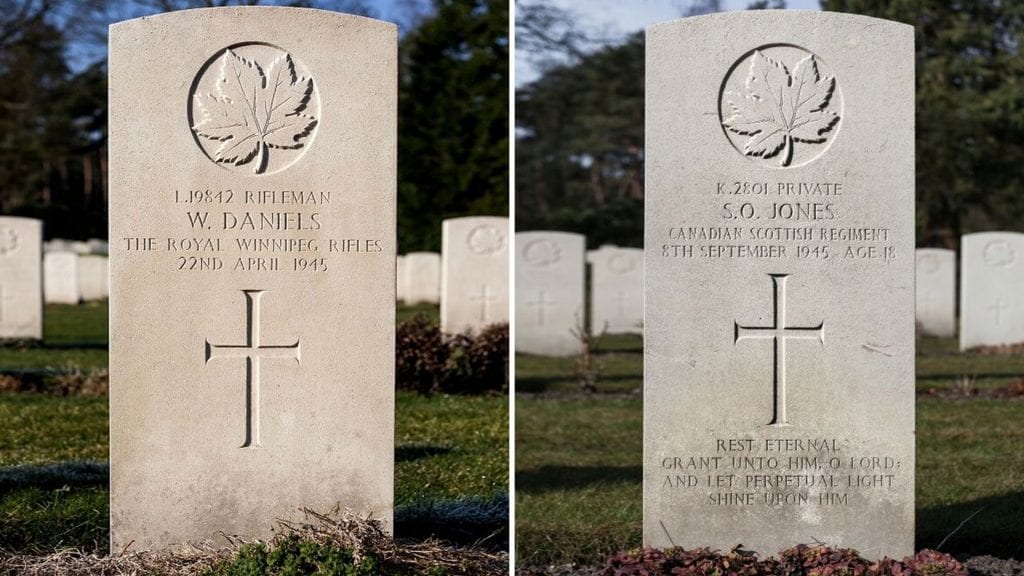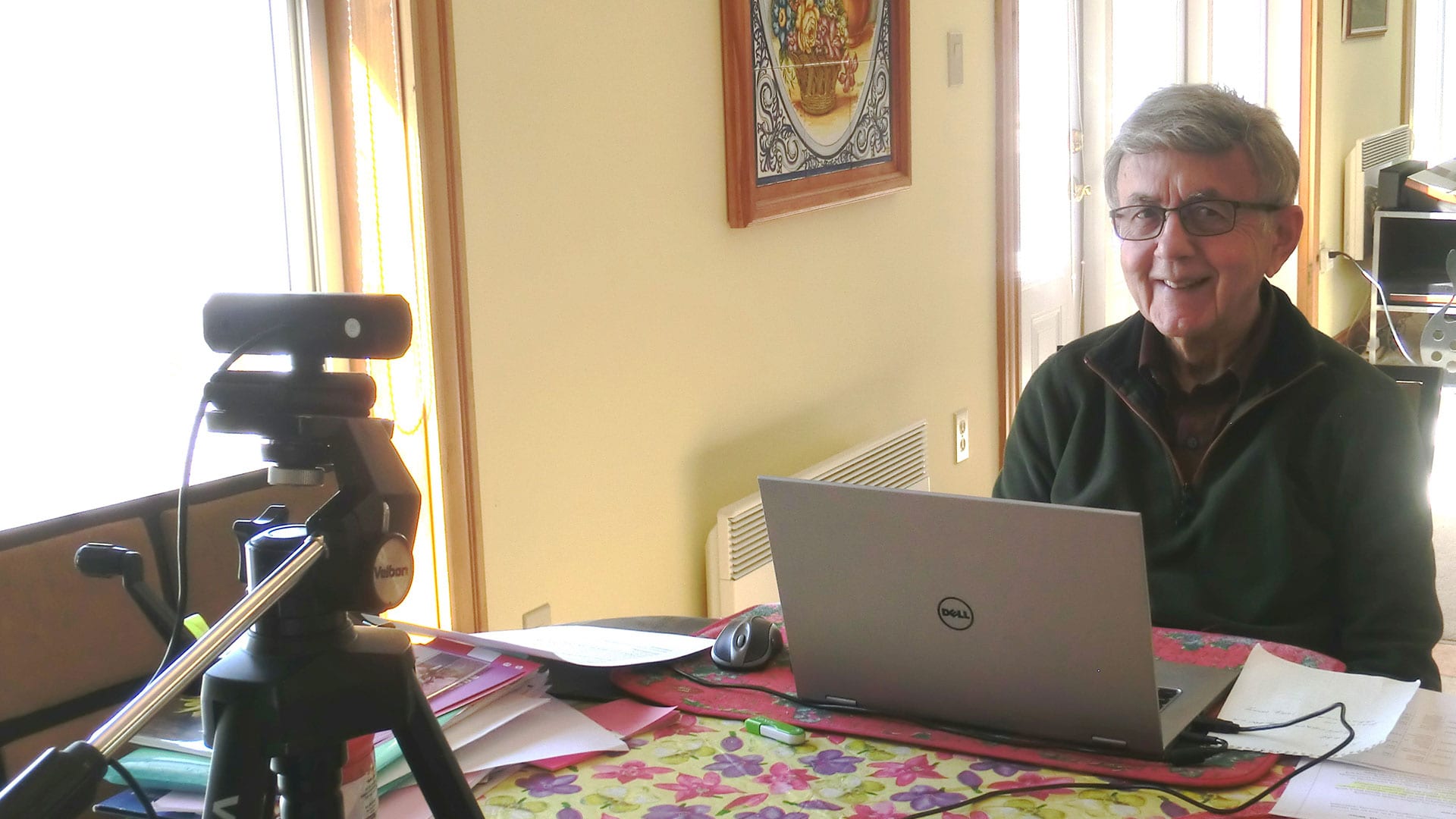
These are the tombstones of two First Nations soldiers buried in Holten in the Netherlands. Photo: submitted
Pieter Valkenburg is on a mission to find photos of First Nations soldiers who were killed during the Second World War and buried overseas in Dutch cemeteries.
His quest is part of a project, called Faces to Graves, that aims to memorialize thousands of Canadians who died liberating western Europe from Nazi occupation.
“It’s a known thing that there were First Nations soldiers that served and First Nations soldiers that lost their lives,” said Valkenburg, a Dutch-born former military man who now calls Prince Edward Island home.
“At the moment, they know of about 55 First Nation soldiers that were killed in World War Two and are buried in the Netherlands — but that could also be bigger,” he added.
Valkenburg got involved with the project to show his gratitude and honour the fallen. He was born in 1944 and recalls his father telling him about the difficult days of Nazi occupation, which the Canadian military played a major role in lifting.
One Remembrance Day, standing beside a cenotaph, Valkenburg decided to research the 48 soldiers whose names were inscribed on it.
He was hooked.
He soon connected with Dutch researchers leading the memorial project and wound up helping them locate pictures of fallen Canadian warriors interred in three cemeteries.
He began seeking photos of veterans from P.E.I. but has now branched out across the Maritimes.
After that, he has no plans to stop.
“I think I’m going to rest when they bury me,” he said with a chuckle. “I’m not going to rest because there’s still a lot of work to be done.”
By chance, he found a descendent of a Mi’kmaw soldier from Glooscap First Nation buried in one of the Dutch graveyards.
He sent the picture back to the Netherlands along with a note asking them if they had any more First Nations soldiers buried there.

The researchers sent him a list with the names of about 15 First Nations and three Métis warriors on it.
Two of those names still needed pictures.
William (Willie) Daniels was a Cree Nation member born in March 1925. When he enlisted he put his residence as Sturgeon Valley, Sask.
He would’ve been barely 20 years old when, fighting alongside the Royal Winnipeg Rifles, he was killed in action in April 1945.
Almost the same age, Stanley Owen Jones was a Haida Nation member whose birthplace was listed in historical documents as Massett, B.C.
Jones also died in 1945 as a result of a tragic carrier accident in Germany, Valkenburg explained.
“The carrier was on a daily routine trip when suddenly a track came off causing the carrier to lurch to the right and to overturn in a ditch,” he said. “Stanley was the co-driver and got stuck under the water and drowned.”
He reached out to the communities seeking descendants, but — having no luck — he asked APTN News to help.
APTN was able to locate a descendent and connect Valkenburg with the Daniels family of Sturgeon Lake First Nation, putting him a little bit closer to his goal.
APTN also reached out to the Old Massett Village Council on Haida Gwaii but was not immediately able to locate a descendent of Jones.
At least 3,000 First Nations people as well as an unknown number of Inuit and Métis enlisted to fight in the Second World War, according to the federal Department of Veterans Affairs.
First Nations were still legally unable to vote, lost their Indian status if they enlisted and faced economic hardships in addition to the residential school system at the time.
Nevertheless, Indigenous soldiers earned at least 18 decorations for bravery in action.
Some, like Tommy Prince or Oliver Milton Martin, were hailed as heroes for their courage and leadership.
It’s estimated more than 200 Indigenous soldiers died.
Valkenburg says he welcomes tips and asks those who may have an ancestor buried overseas to contact him here.










